My Darling Clementine
9.2 /10 1 Votes
100% Rotten Tomatoes Initial DVD release January 6, 2004 Country United States | 7.8/10 IMDb 4/4 Roger Ebert Genre Drama, Western Duration Language English | |||||||||||||||||||||||||||||||||
 | ||||||||||||||||||||||||||||||||||
Release date December 3, 1946 (1946-12-03) Writer Samuel G. Engel (screen play), Winston Miller (screen play), Sam Hellman (from a story by), Stuart N. Lake (based on a book by) Initial release October 16, 1946 (San Francisco) Music director Cyril J. Mockridge, Alfred Newman, David Buttolph Cast (Wyatt Earp), (Chihuahua), (Dr. John 'Doc' Holliday), (Clementine Carter), (Old Man Clanton), (Virgil Earp) Tagline She was everything the West was - young, fiery, exciting! Similar Stagecoach (1939 film), Fort Apache (film), Hour of the Gun | ||||||||||||||||||||||||||||||||||
Oh my darling clementine
My Darling Clementine is a 1946 American Western film directed by John Ford and starring Henry Fonda as Wyatt Earp during the period leading up to the gunfight at the OK Corral. The ensemble cast also features Victor Mature (as Doc Holliday), Linda Darnell, Walter Brennan, Tim Holt, Cathy Downs and Ward Bond.
Contents
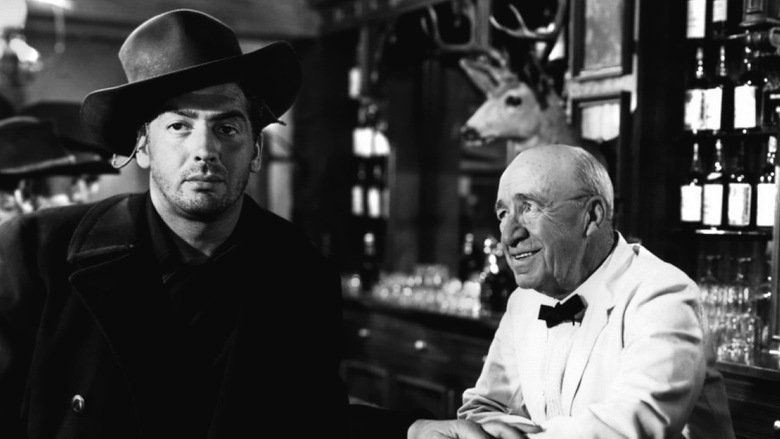
The title of the movie is borrowed from the theme song "Oh My Darling, Clementine", sung in parts over the opening and closing credits. The screenplay is based on the fictionalized biography Wyatt Earp: Frontier Marshal by Stuart Lake, as were two earlier movies, both named Frontier Marshal (released in 1934 and 1939, respectively).
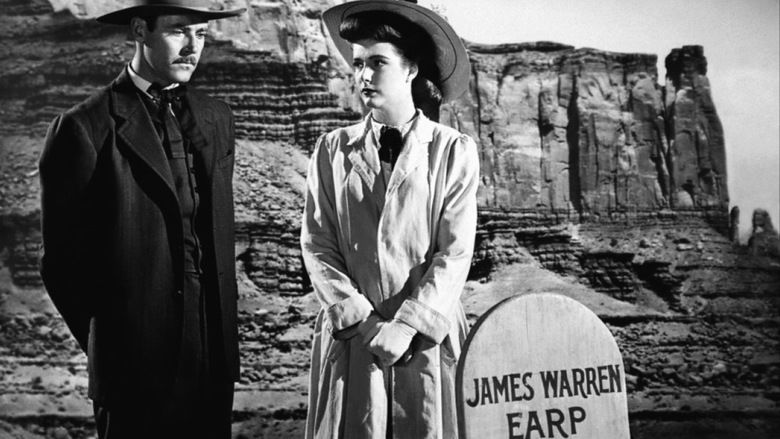
My Darling Clementine is regarded by many film critics as one of the best Westerns ever made.

Plot
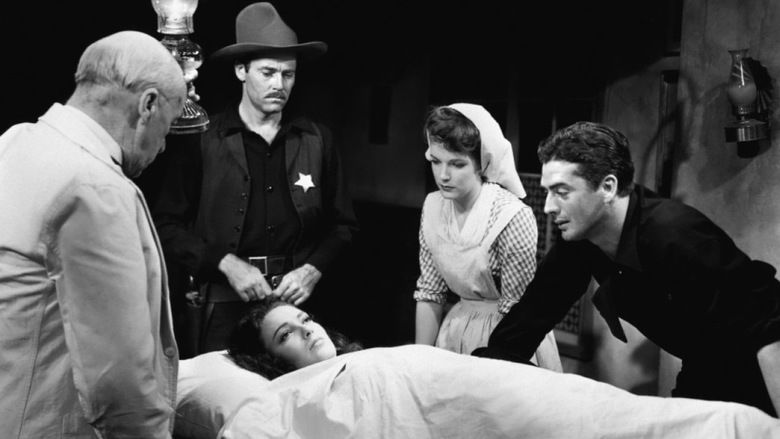
In 1882 (in reality, the gunfight at the O.K. Corral happened on October 26, 1881), Wyatt, Morgan, Virgil, and James Earp are driving cattle to California when they cross Old Man Clanton. When they learn about the nearby boom town of Tombstone, the older brothers ride in, leaving the youngest brother James to watch over the cattle. The Earps soon learn that Tombstone is a lawless town without a marshal. Wyatt is the only man in the town willing to face the drunk Indian shooting at the townspeople. When they return to their camp, they find the cattle rustled and James murdered.
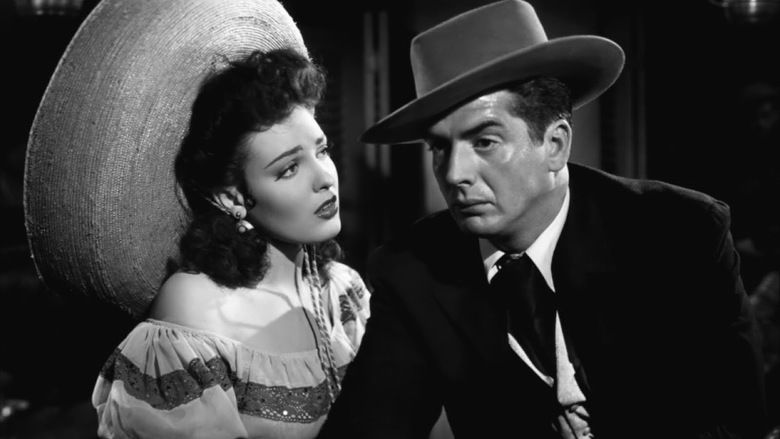
Seeking to avenge his brother's murder, Wyatt returns to Tombstone. To identify the perpetrator, he takes the open position of town marshal and meets with Doc Holliday and the Clanton gang several times. During this time, Clementine Carter, Doc's ex-love interest from his hometown of Boston, arrives in town on the Stagecoach, having searched for him for some time, and is given a room at the same hotel where both Wyatt and Doc Holliday are residing.
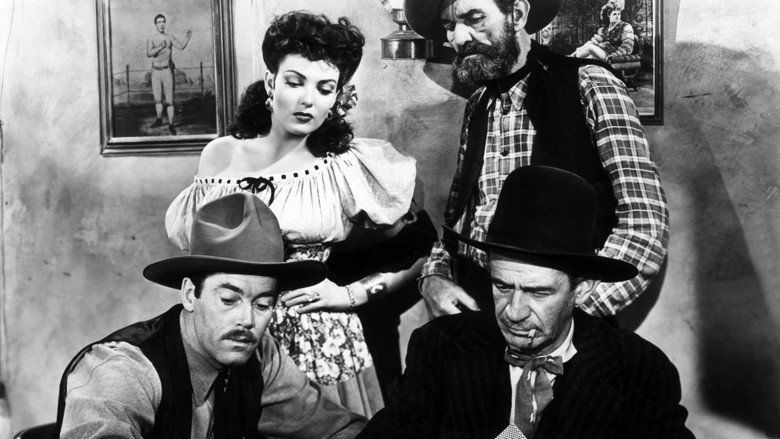
Chihuahua, a hot-tempered woman who loves Doc, sings in the local saloon. Doc tells Clementine to return to Boston, or he will leave Tombstone. Clementine stays, so Doc leaves, much to the displeasure of Chihuahua, who starts an argument with Clementine. Wyatt walks in on the two and breaks up the women. Chihuahua then reveals a silver cross that belonged to James Earp. She claims Doc gave it to her.
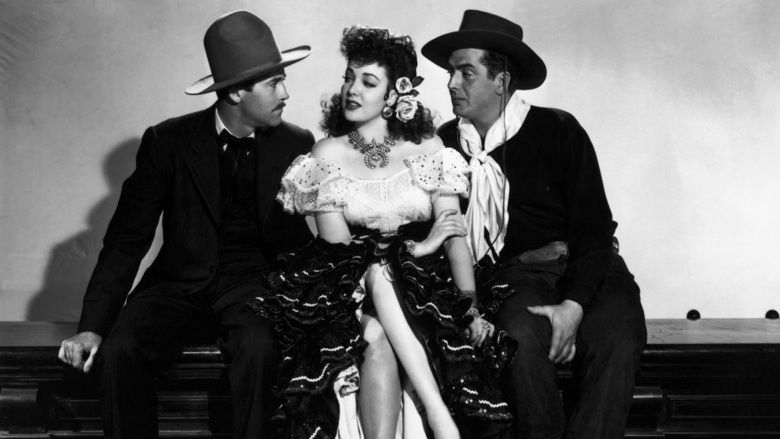
Wyatt chases down Doc, who is headed for Tucson, and shoots a pistol out of Doc's hands. The two return to Tombstone, where after being questioned, Chihuahua reveals that the silver cross was actually given to her by Billy Clanton. Billy shoots Chihuahua through a window and takes off on horseback, but is shot by Wyatt. Billy keeps riding, so Virgil pursues him to the Clanton homestead, where Billy dies of his wounds. Old Man Clanton then kills Virgil.
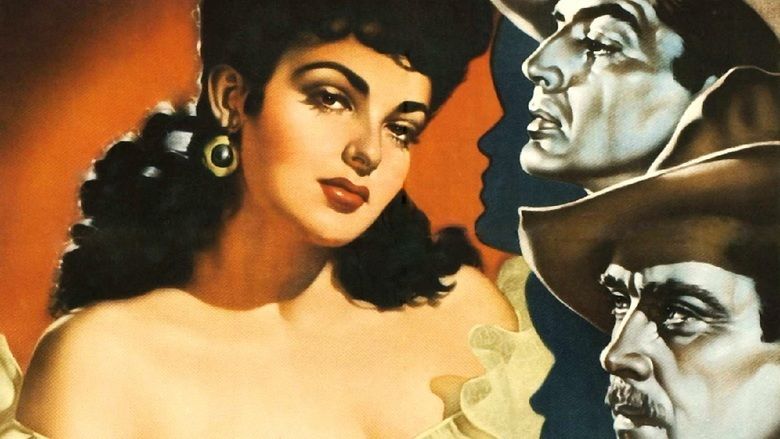
In town, a reluctant Doc is persuaded to operate on Chihuahua, his medical training being her only chance. The Clantons then arrive, toss Virgil's body on the street and announce they will be waiting for the rest of the Earps at the O.K. Corral.
Chihuahua dies and Doc decides to walk alongside Wyatt and Morgan to the O.K. Corral at sunup. A gunfight rages in which most of the Clantons are killed, as is Doc.
Wyatt and Morgan resign as law enforcers. Morgan heads out in a horse and buggy. Wyatt speaks with Clementine one last time, telling her if he is ever this way again, he will look her up at the school house. Mounting his horse, Wyatt says, "Ma'am, I sure like that name...Clementine," and rides off after his brother.
Cast
Plot devices
The final script of the movie varies considerably from historical fact to create additional dramatic conflict and character. Clementine Carter is not a historical person, and in this script appears to be an amalgam of Big Nose Kate and Josephine Earp. Unlike the movie characters, the Earps were never cowboys, drovers, or cattle owners. Important plot devices in the film and personal details about the main characters were all liberally adapted for the movie.
Old Man Clanton actually died prior to the gunfight and probably never met any of the Earps. Doc was a dentist, not a surgeon, and survived the shootout. James Earp, who was the first to die in the story, actually lived until 1926. The key women in Wyatt's and Doc's lives—Wyatt's common law wife Josephine and Doc's common-law wife Big Nose Kate—were not present in Lake's original story and were kept out of the movie as well. The film gives the date of the gunfight as 1882 when it actually occurred in 1881.
Origins
In 1931, Stuart Lake published the first biography two years after Earp's death. Lake retold the story in the 1946 book My Darling Clementine, for which Ford acquired the film rights. The two books have since been determined to be largely fictionalized stories about the Earp brothers and the gunfight at the O.K. Corral and their conflict with the outlaw Cowboys: Billy Clanton, Tom McLaury and his brother Frank McLaury. The gunfight was relatively unknown to the American public until Lake published the two books and after the movie was made.
Director John Ford said that when he was a prop boy in the early days of silent pictures, Earp would visit pals he knew from his Tombstone days on the sets. "I used to give him a chair and a cup of coffee, and he told me about the fight at the O.K. Corral. So in My Darling Clementine, we did it exactly the way it had been." Ford was working on his last silent feature, Hangman's House, in 1928, which included the first credited screen appearance by John Wayne. Wayne later told Hugh O'Brian that he based his image of the Western lawman on his conversations with Earp. Ford did not want to make the movie, but his contract required him to make one more movie for 20th Century Fox.
In their later years, Wyatt and Josephine Earp worked hard to eliminate any mention of Josephine's previous relationship with Johnny Behan or Wyatt's previous common law marriage to Matty Blaylock. They successfully kept Josephine's name out of Lake's biography of Wyatt and after he died, Josephine threatened to sue the movie producers to keep it that way. Lake corresponded with Josephine, and he claimed she attempted to influence what he wrote and hamper him in every way possible, including consulting lawyers. Josephine insisted she was striving to protect Wyatt Earp's legacy.
After the movie Gunfight at the O.K. Corral (in which Ireland portrayed another real-life figure of the time, Johnny Ringo) was released in 1957, the shootout came to be known by that name. Since then, the conflict has been portrayed with varying degrees of accuracy in numerous Western films and books.
Critical reception
The film is generally regarded as one of the best Westerns made by John Ford and one of his best films overall.
At the time of its release, Bosley Crowther lauded the film and wrote, "The eminent director, John Ford, is a man who has a way with a Western like nobody in the picture trade. Seven years ago his classic Stagecoach snuggled very close to fine art in this genre. And now, by George, he's almost matched it with My Darling Clementine ... But even with standard Western fiction—and that's what the script has enjoined—Mr. Ford can evoke fine sensations and curiously-captivating moods. From the moment that Wyatt and his brothers are discovered on the wide and dusty range, trailing a herd of cattle to a far-off promised land, a tone of pictorial authority is struck—and it is held. Every scene, every shot is the product of a keen and sensitive eye—an eye which has deep comprehension of the beauty of rugged people and a rugged world."
The Variety reviewer wrote, "Trademark of John Ford's direction is clearly stamped on the film with its shadowy lights, softly contrasted moods and measured pace, but a tendency is discernible towards stylization for the sake of stylization. At several points, the pic comes to a dead stop to let Ford go gunning for some arty effect".
The review aggregator website Rotten Tomatoes reported a 100% approval rating with an average rating of 8.9/10, based on 28 reviews.
In 1991, the film was deemed "culturally, historically, or aesthetically significant" by the Library of Congress and selected for preservation in the United States National Film Registry; it was among the first 75 films entered into the registry. Fifty years after its release, Roger Ebert reviewed the film and included it in his list of The Great Movies.
In 2004, Matt Bailey summarized its significance: "If there is one film that deserves every word of praise ever uttered or written about it, it is John Ford's My Darling Clementine. Perhaps the greatest film in a career full of great films, arguably the finest achievement in a rich and magnificent genre, and undoubtedly the best version of one of America's most enduring myths, the film is an undeniable and genuine classic." In the British Film Institute's 2012 Sight & Sound polls, seven critics and five directors named it one of their 10 favorite films.
In popular culture
Director Sam Peckinpah considered My Darling Clementine his favorite Western, and paid homage to it in several of his Westerns, including Major Dundee (1965) and The Wild Bunch (1969).
In the episode of the TV series M*A*S*H (S05E21, Movie Tonight), Col. Potter uses this movie to help boost camp morale; leading the entire viewing party to reenact the climactic gun fight which is then "broken up" when a bus carrying wounded soldiers arrives at the camp.
References
My Darling Clementine WikipediaMy Darling Clementine IMDbMy Darling Clementine Rotten TomatoesMy Darling Clementine Roger EbertMy Darling Clementine themoviedb.org
